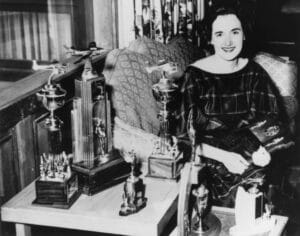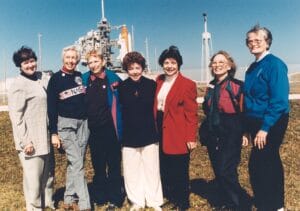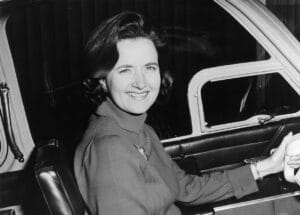
Growing up in Chicago, Jessen wanted to fly, and joined the Civil Air Patrol. A student let her take over the controls on a flight, and called her a “natural.” At the time she was a junior in high school. While attending Oklahoma University she was a member of the school’s “Air Knockers” flight club, and was the school’s first female flight instructor. She was ranked nationally for her abilities, and at some point wrote a history of the first all-female-pilot air race, Sky Girls *. Upon graduation in 1961, she was one of the last women recruited to participate in a privately funded research program run by NASA flight surgeon William Randolph Lovelace II.

Lovelace, who designed the medical selection testing for the Mercury Seven — the first astronauts — wanted to see if women could get through the same screenings as the men. He went through the files of 700 women who had at least 1,000 hours of flight time as a pilot, and eventually invited 25 women to participate. It’s unclear how many accepted, but in total 13 of the women did pass the same screening procedures as the men; they were later dubbed the Mercury 13. NASA didn’t seem to care, and concentrated on the men instead. Lovelace persisted, and chose some number of women for training, including Jessen, but the U.S. Navy refused to let the women use their facilities, and the program ended. (In 1965, Dr. Lovelace, who by then had been appointed NASA’s Director of Space Medicine, and his wife were killed in a private plane crash.)

Jessen went to work for Beech Aircraft Corp. in Wichita, Kansas, as a demonstration pilot. When the company brought out a new plane, the “Musketeer”, Jessen was one of three pilots chosen to take three of the planes on a 90-day cross-country flight to show them off — and to chronicle problems encountered so the model could be improved. She wrote a book about the adventure, The Fabulous Flight of the Three Musketeers, and revealed there that she always flew wearing a dress — and high heels. The plane she flew, N2303Z, has since been fully restored is part of the flying collection at the Beechcraft Heritage Museum in Tullahoma, Tenn. During her time with the company, Jessen trained and qualified to fly every plane Beech made — and met her husband, Bob Jessen, at the company. In 1967 they moved to Idaho to establish a Beechcraft dealership.

Jessen was appointed by President Lyndon B. Johnson to serve on the women’s advisory committee to the Federal Aviation Agency, and served two years as the president of the Ninety-Nines, the International Organization of Women Pilots — and wrote a book to chronicle the organization’s first 50 years. Established in 1929 by Amelia Earhart and 98 other female pilots, the organization still exists today. In 2018, Netflix released the documentary Mercury 13 which, review aggregator Rotten Tomatoes said, “offers yet another sobering example of how institutionalized sexism has thwarted countless dreams — and held nations back from their full potential.” Unfortunately, in 2017 Jessen was diagnosed with macular degeneration in her left eye, and had to stop flying — at 80 years old. Gene Nora Stumbough Jessen, still residing in Idaho, died on May 21. She was 87.
